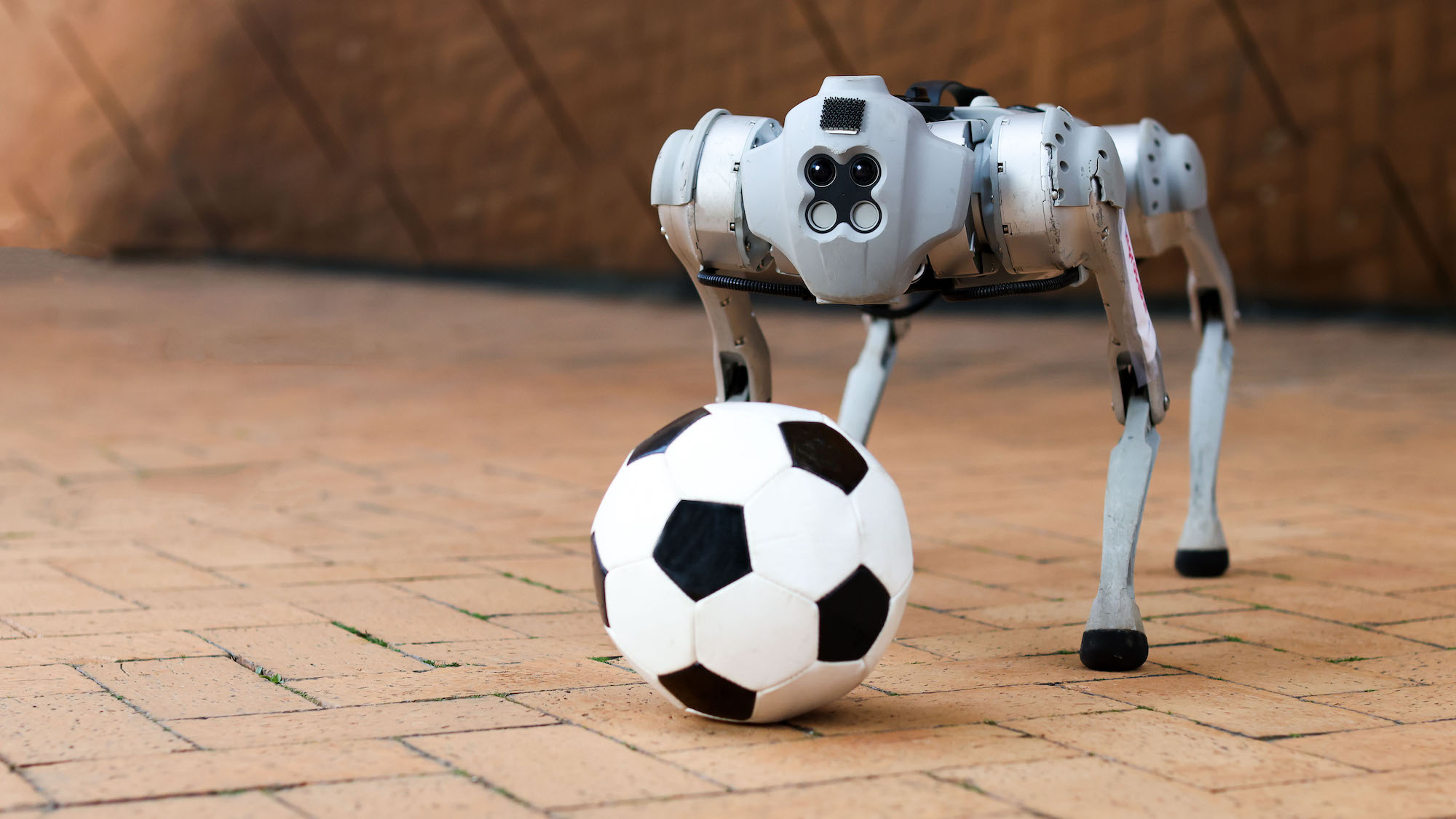

The history of robots strutting their stuff on the soccer field stretches as far back as 1992, when Japanese researchers first envisioned the sport as a solid benchmark testing environment for engineering advancements. Since then, the RoboCup has become the annual nexus of fancy mechanical footwork, and MIT just unveiled its newest potential competitor. Unlike many of its two-legged and wheeled counterparts, however, the quadrupedal design makes this but particularly unique, as well as better suited to handle a variety of real-world terrains.
It’s time for DribbleBot’s kickoff.

Publicly unveiled today from researchers in MIT’s Improbable Artificial Intelligence Lab within the school’s Computer Science and Artificial Intelligence Laboratory (CSAIL), DribbleBot showcases extremely impressive strides in articulation and real-time environmental analysis. Using a combination of onboarding computing and sensing, the team’s four-legged athlete can reportedly handle gravel, grass, sand, snow, and pavement, as well as pick itself up if it falls.
Kicking around a soccer ball provides an interesting additional array of complications for a robot. The way a ball interacts with the terrain beneath it via friction and drag, for example, is different from how a robot’s legs may interact with the same environment. Therefore, a robot needs to be able to simultaneously account for both its own responses, as well as the object it’s attempting to kick.
[Related: Watch this robotic dog use one of its ‘paws’ to open doors.]
The newest robotic versatility comes from a combination of machine learning, onboard sensors, actuators, cameras, and computing power. But before taking to the soccer stadium, DribbleBot needed extensive practice time—in this case, within computer simulations. Researchers built a program mimicking the dog bot’s design alongside real world physics parameters. Once given the greenlight, 4,000 versions of the robot are simulated simultaneously to collect and learn from data. According to researchers, a few actual days’ worth of training adds up to hundreds of simulated days.
Building better DribbleBots isn’t simply for fun and games; the advancements are meant to help out in some of life’s most serious situations. “If you look around today, most robots are wheeled. But imagine that there’s a disaster scenario, flooding, or an earthquake, and we want robots to aid humans in the search-and-rescue process,” Pulkit Agrawal, a CSAIL principal investigator and director of Improbable AI Lab, said in a statement, adding, “Our goal in developing algorithms for legged robots is to provide autonomy in challenging and complex terrains that are currently beyond the reach of robotic systems.”